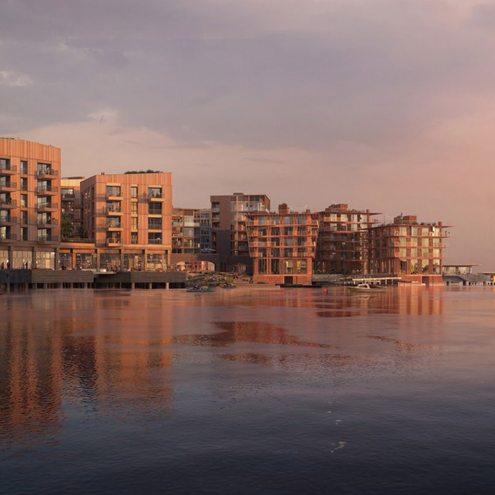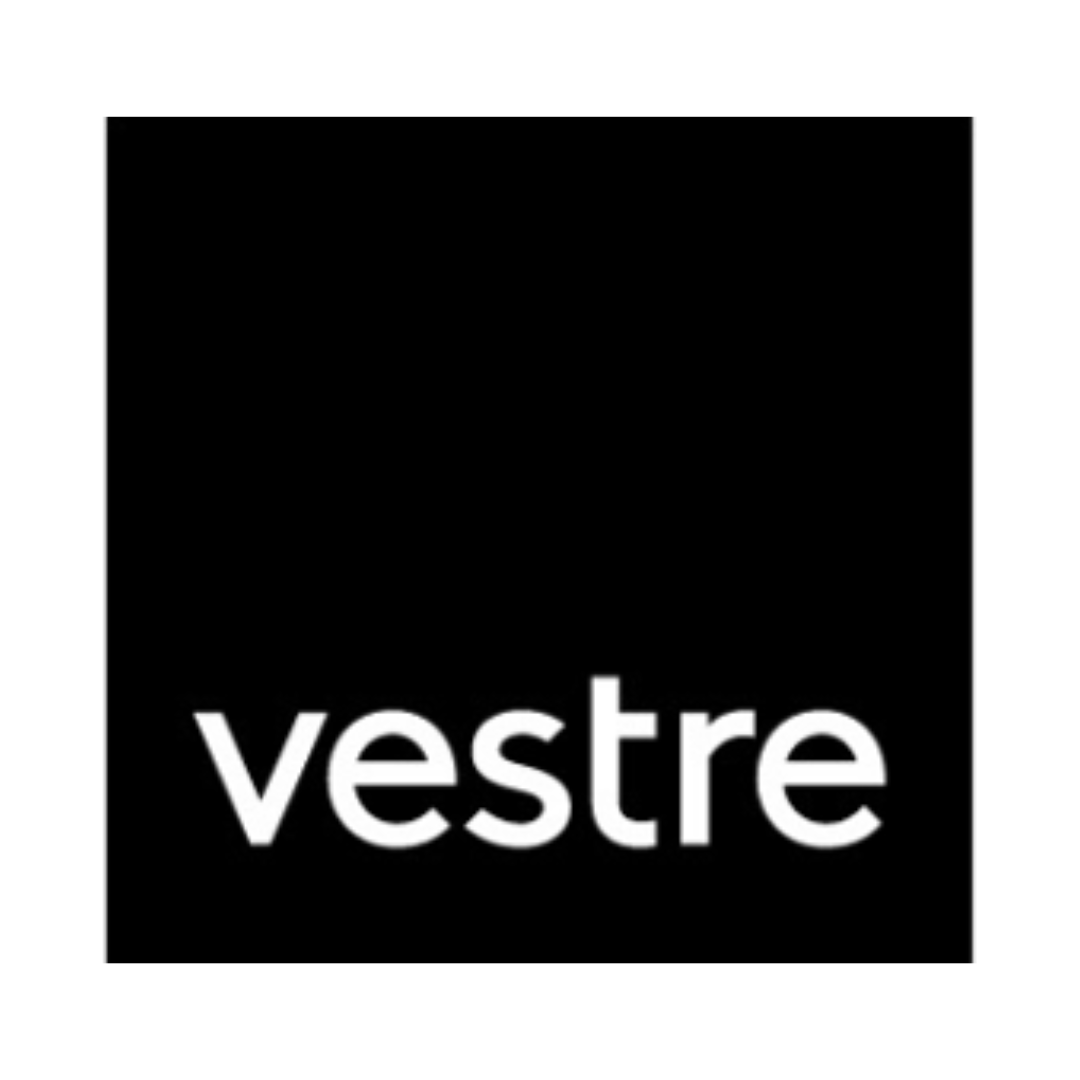Project showcase
Grønlikaia, Oslo, Norway – Hav Eiendom with Team LondonOn

Located next to the Sørenga this former closed harbour quay is being developed as Oslo’s new fjord district. 1,500 homes and up to 4,000 jobs are provided as well as a kilometre of new sea front. A mix of residential types hopes to ensure a diverse community to meet in the street level public functions.
Who is on the project team?
Designed by Londonon represented by Haptic Architects (lead), Morris+Company, Gort Scott and Mae, supported by Elliott Wood, Useful Projects, Periscope, Neighbourhood and Tin.
Describe the context of this project?
Grønlikaia is a major new waterfront transformation project in the heart of Oslo. Currently, the site is defined by the former industrial quayside of Oslo’s harbour; a stretch of dockyard that sits between the main rail and road infrastructure, heading south from the city and the line of the shore.
As one of the last waterfront sites of the city, the development represents an opportunity for Oslo to create an inclusive and diverse ’fjord city’. A new place aimed at a wide variety of Oslo’s population, including the underserved communities of the eastern parts of the city, such as Tøyen and Grønland.
The site sits on a narrow part of the historic quayside, below the iconic Ekeberg hill. From here, Edvard Munch has painted his seminal piece ‘Scream’. This unique location has also led to the design challenge: how to create new terrain and space on a plot which is currently mainly water.
Its location provides an opportunity for Grønlikaia to reconnect citizens of central and eastern neighbourhoods with the waterside, and to transform the Oslofjord into an ecological and leisure asset for the city. Its central location and being in close proximity to existing rail, road and port infrastructure provide an opportunity to introduce a mix of uses and establish a true diverse neighbourhood. Furthermore, its great infrastructural links make Grønlikaia ideally placed to be a test case for a new way of city development, focused on upcycling and reuse of redundant construction materials and elements.
Please describe your approach to this future place and its mix of uses. How will it function as a vibrant place? How does it knit into and serve the needs of the wider area?
Grønlikaia is envisaged as a vibrant new neighbourhood. Besides new homes, the development offers a mix of public and private spaces such as a market place and small-scale culture and commercial venues.
To transform this currently closed-off industrial space into a new mixed-use neighbourhood, we created new connections and transportation routes to Oslo’s central, eastern and southern neighbourhoods. These routes are facilitated by extending Oslo’s harbour promenade through the new development, which at the same time unlocks space for leisure activities adjacent to the water. Its south-west facing location makes it an ideal setting for swimming, kayaking and a variety of food and beverage offerings.
New forms of living and models of ownership have been proposed to create more diverse and affordable housing, enabling more people to live in the city centre. Londonon has drawn on experience of applying different housing models such as affordable housing, mixed tenure, shared ownership, co-living and intergenerational living, showing examples that might be relevant to Oslo as well.
Ground floors are activated across the site with a series of diverse public functions. These vary from a large food market, to smaller spaces for a mixture of commercial and cultural activities. They are complimented by outdoor spaces, ranging from a central market square, to smaller parks, and a series of generously scaled steps to lead people to the waterfront. This mix of indoor and outdoor public spaces is particularly important in the Scandinavian climate to ensure the new neighbourhood remains vibrant throughout the year.
What is the environmental impact of the project? How will the carbon use and material impact of the development be mitigated? What is the sustainability strategy?
To develop Grønlikaia, we gathered a team of experts in sustainability, placemaking, new forms of living, circular and doughnut economy, landscape design, and waterfront development. The project has been designed with sustainability at its core, focusing heavily on carbon reducing methods. All new buildings are designed to create better ecological conditions, contributing to the much needed restoration of marine life in the Oslo fjord.
Reclaimed land/ on-water developments like these are typically carbon intensive, but Grønlikaia challenges that theory. Where previous stages of Oslo’s waterside redevelopments were built using steel piling, concrete seawalls and backfill – costing a huge amount of energy and destroying sea life -, our proposal uses upcycled marine steel to create a low carbon new quay-front and new habitats for fish. This will help to maintain existing marine and land based natural resources.
Grønlikaia will be developed on a series of slender steel piles which form a minimum of decking and slabs above water, allowing light and water circulation to the sea below. Repurposing the maritime steel left from Norway’s oil industry not only saves carbon, but also makes the decommissioning process more environmentally efficient.
Above water, the development is built using either contemporary timber structures, or recycled building elements, such as reclaimed bricks or recycled steel sections.
Finally, the long term sustainability of the project is assured through the careful design of buildings on simple, repetitive structural grids and floor heights. This allows for flexibility and straightforward reconfiguration over time, avoiding the need for demolition.
Describe the social impact of the project: How will this future place contribute to the economic, environmental and social wellbeing of its citizens?
Grønlikaia has social sustainability at its core. We were very conscious to create a neighbourhood that is accessible for all of Oslo’s citizens. Much of Oslo’s waterfront development has been defined by luxury apartments and high-end retail and office offerings, resulting in culturally homogenous neighbourhoods.
To establish a more diverse and inclusive neighbourhood we are proposing to focus on offering a mix of residential types and tenures, and adding public functions at street level. Economic wellbeing is delivered through the creation of 2 novel building types for Oslo. Firstly the market hall, which has a dark kitchen at its core, creating a low threshold start up environment for new restaurant entrepreneurs in the city. Secondly a material reuse centre, a place that not only facilitates the reuse of materials for the wider development, but also offers skills training in the construction industry.
Activation of public spaces is also key to the success of Grønlikaia functioning as a vibrant new neighbourhood. Outdoor areas have been carefully shaped to maximize sunlight, shelter from wind and afford views over the Oslofjord. By creating pleasant year-round conditions, the neighbourhood’s design encourages activity. A new cycle highway crosses the site, the central market square hosts a large play and offers sports facilities, and the waterside walkway offers many jetties to access the water on a kayak of go for a swim.
Festival of Pineapples
24-26 February 2026
Pineapples prize giving night
April
Pineapples at Festival of Place
10 June 2026
© The Pineapples - Tweak Ltd. 124 City Road, London, EC1V 2NX. Tel: 020 3326 7238




